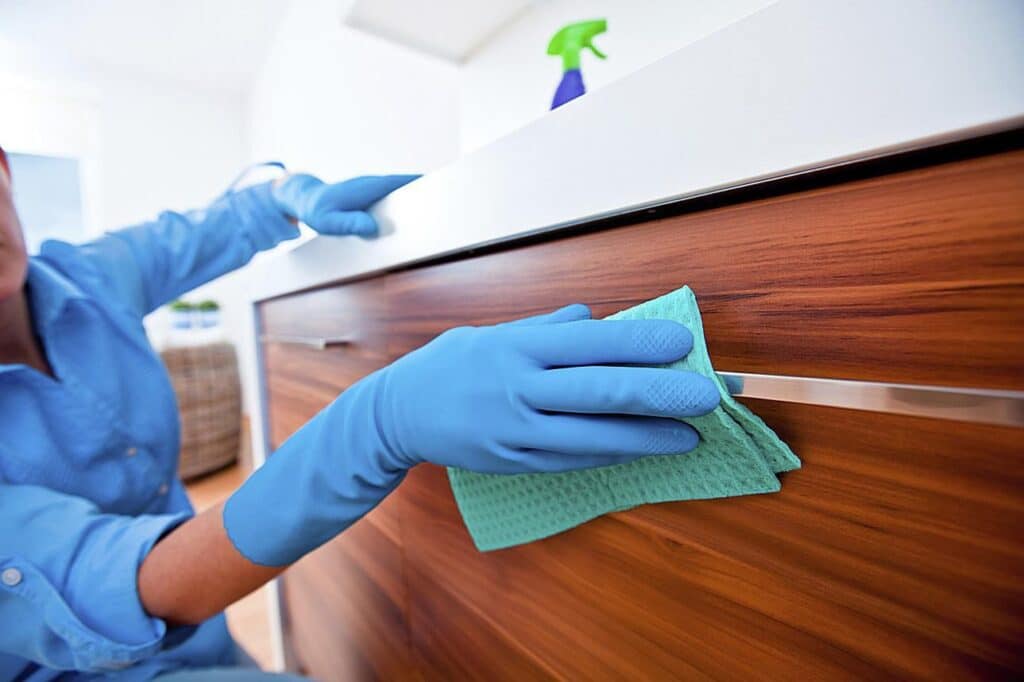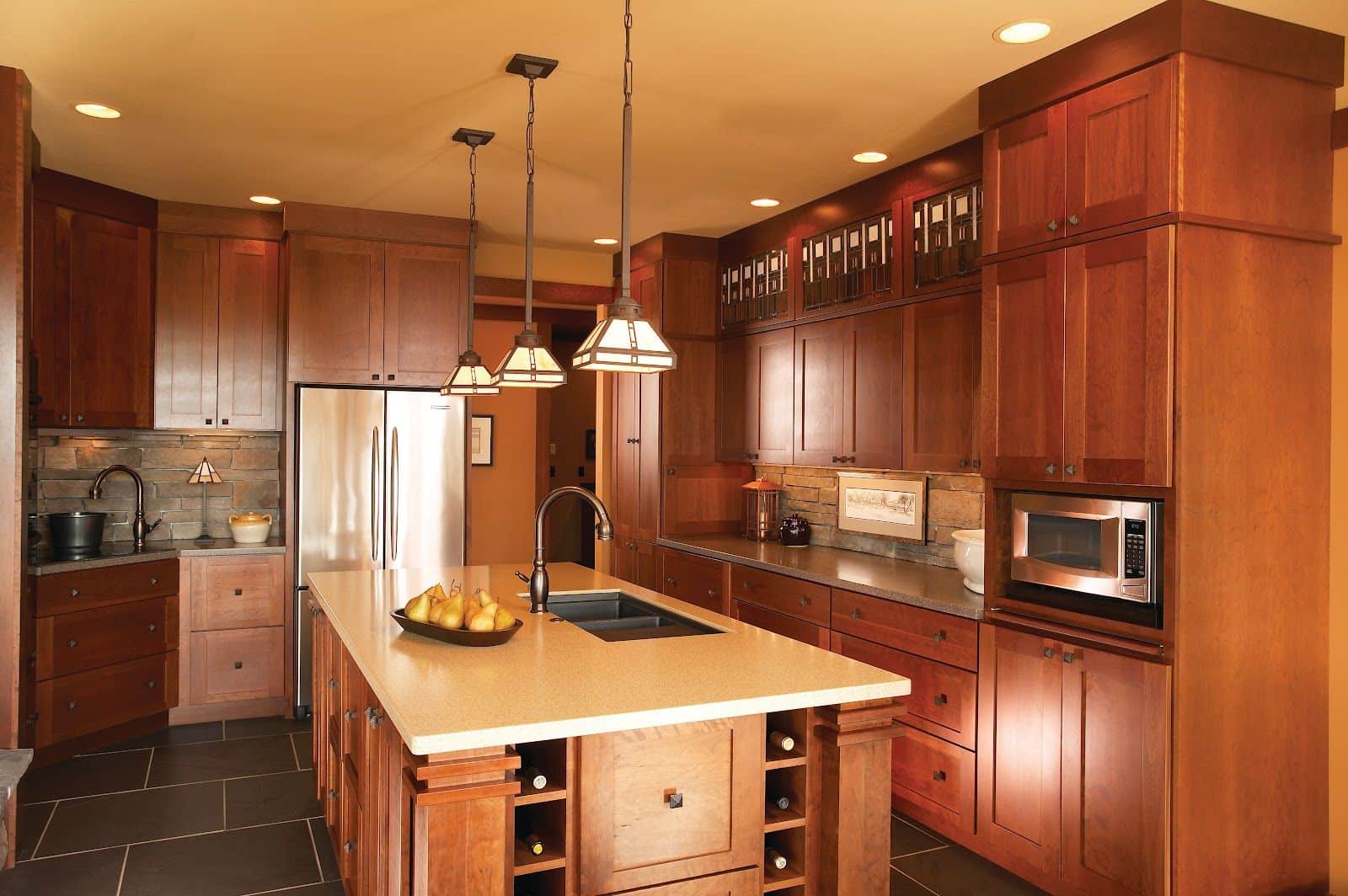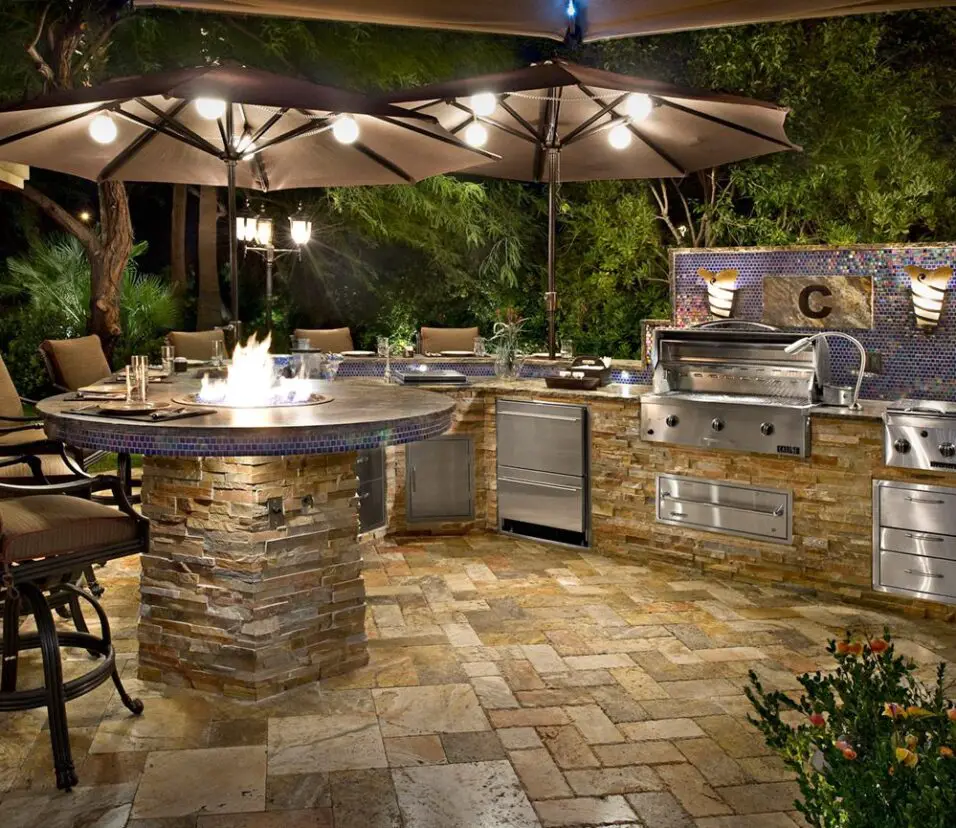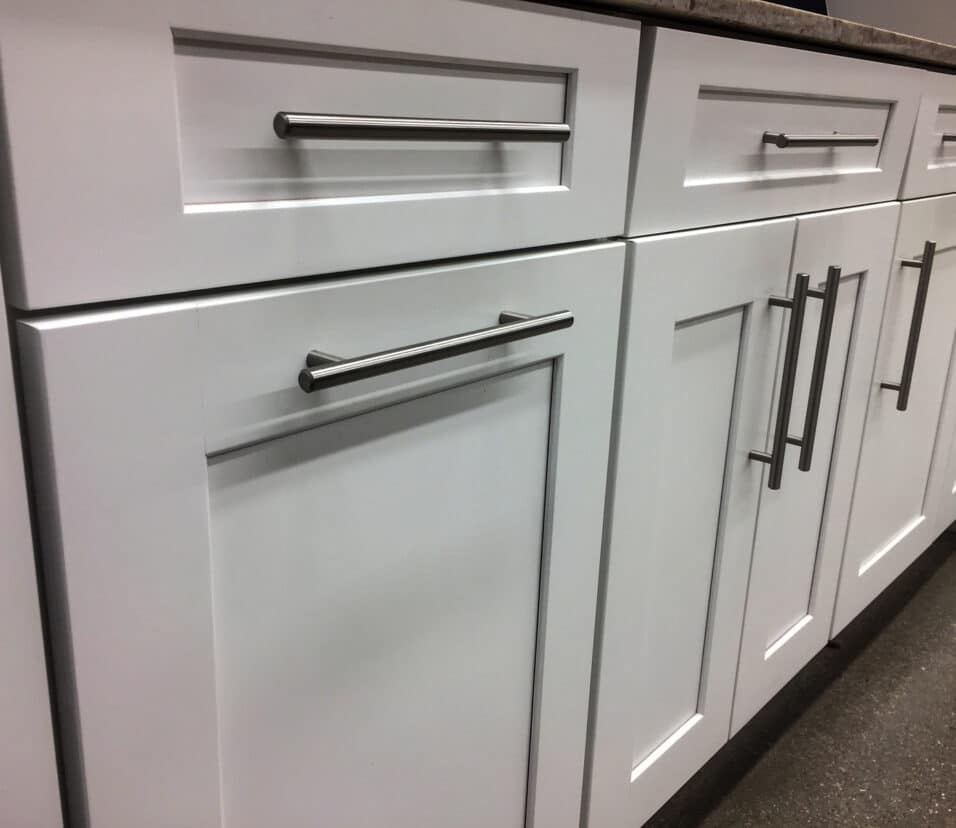How To Clean Wooden Kitchen Cabinets
Introduction
How To Clean Wooden Kitchen Cabinets: Wooden kitchen cabinets lend a timeless and charming appeal to any kitchen, adding a touch of natural warmth and elegance. However, over time, these cabinets can accumulate dirt, grime, and grease, which may diminish their beauty and longevity. Properly cleaning and maintaining wooden kitchen cabinets is essential to preserve their luster and ensure they remain a centerpiece of your culinary haven.
To clean wooden kitchen cabinets, considering various types of wood finishes and sensitive surfaces. From everyday maintenance to tackling stubborn stains, we’ll equip you with the knowledge and techniques to keep your wooden kitchen cabinets looking pristine and inviting. Whether you are dealing with routine cleaning or embarking on a deep cleaning session, the following tips will not only restore the cabinets’ natural beauty but also extend their life for generations to come.
For everyday cleaning, mix a few drops of dish soap with warm water in a bucket. Dip a microfiber cloth or soft sponge into the soapy water and gently wipe down the cabinet’s exterior surfaces. Avoid using abrasive pads or harsh chemicals that can scratch or damage the wood. Grease build-up can be challenging to clean. Mix equal parts white vinegar and water, and gently scrub the greasy areas. The vinegar’s acidity will help break down the grease, making it easier to remove.

How do you clean kitchen cabinets without removing finish?
The Best Way to Clean Kitchen Cabinets without Removing the Finish
- Fill your sink or a large bowl with warm water.
- Add a few drops of dish soap and give the mixture a swirl.
- Dip a microfiber cloth in the solution and wring out excess moisture.
- Wipe down your kitchen cabinets from top to bottom.
For everyday cleaning, mix a few drops of mild dish soap with warm water in a bucket. Dip a microfiber cloth or soft sponge into the soapy water, wring it out well, and gently wipe down the cabinet’s exterior surfaces. Avoid using excessive water, as prolonged exposure to moisture can harm the finish. Ensure the cloth or sponge is damp, not soaking wet.
After cleaning, make sure to dry the cabinets thoroughly with a clean, dry cloth. Avoid leaving any water on the surface, as this can harm the finish over time. If your cabinets have a natural finish or appear dull, you may consider applying a wood-specific polish or oil to restore their luster. Always follow the manufacturer’s instructions for the best results.
To keep your kitchen cabinets looking their best, practice regular maintenance. Wipe down spills and splatters as soon as they occur, and dust the cabinets regularly to prevent the build-up of dirt and grime.
Cleaning kitchen cabinets without removing the finish is essential for preserving the cabinets’ appearance and ensuring their longevity. Over time, cabinets can accumulate dirt, grease, and grime, making them look dull and worn. However, with the right cleaning techniques and products, you can restore the cabinets’ luster and keep them looking their best without damaging the finish.
What is best cleaner for wood cabinets?
Mix a cup of white vinegar with a cup of water. This mild cleaning solution is perfect for everyday use on wooden cabinets. It won’t warp the wood or take off the finish. If you dislike cleaning with vinegar, you can use a light soap solution instead.
One of the safest and most effective cleaners for most types of wood cabinets is a mixture of mild dish soap and warm water. This gentle solution helps remove everyday dirt, grease, and grime without harming the wood’s finish. Simply mix a few drops of mild dish soap with warm water in a bucket, dip a microfiber cloth or soft sponge into the solution, and gently wipe down the cabinet surfaces. Make sure to wring out the cloth or sponge well to avoid excess water.
Many commercially available wood-specific cleaners are designed to clean and protect wood surfaces without causing any damage. These cleaners are formulated to remove dirt, grease, and stains while nourishing the wood and enhancing its natural beauty. Always read the product label and follow the manufacturer’s instructions for the best results.
White vinegar is an excellent natural cleaner for wood cabinets, especially for cutting through grease and grime. Mix equal parts of white vinegar and water in a spray bottle, and spray the solution onto the cabinet surfaces. Let it sit for a few minutes to break down the grease, then wipe it away with a damp cloth. The vinegar smell will dissipate as it dries.
What is the best polish for kitchen cabinets?
Best Overall
The Weiman Cabinet & Wood Clean & Shine Spray is our top pick for a furniture polish, because it is easy to use, cleans exceptionally well, and leaves a pleasant scent that isn’t overpowering.
Beeswax polish is a natural and traditional option for enhancing the beauty of wood cabinets. It contains natural oils that penetrate the wood, providing a deep shine and nourishing the surface. Beeswax polish is particularly effective for older or antique cabinets, as it can help restore and protect the wood’s patina. Additionally, beeswax polishes often have a pleasant, subtle scent.
Carnauba wax polish is derived from the leaves of the Brazilian palm tree and is known for its exceptional hardness and durability. It forms a strong protective layer on the wood surface, making it highly effective in repelling dust and preventing scratches. Carnauba wax polish offers a long-lasting shine and provides excellent water resistance. However, it may require some additional effort during the application process.
Oil-based polishes are popular for their ease of application and ability to enhance the wood’s natural beauty. They penetrate the wood, moisturizing and revitalizing it to restore its shine. Some oil-based polishes may contain additives like lemon oil or mineral oil, which offer additional benefits such as a fresh scent and improved cleaning properties.
Spray polishes are convenient and easy to use, making them a popular choice for regular maintenance. They often contain a combination of oils and solvents, providing a quick and even application. However, it’s essential to choose a spray polish specifically designed for wood cabinets to avoid any harmful chemicals or residues that may damage the finish.
What is the best home remedy for cleaning kitchen cabinets?
Most cabinet types, including metal, plastic laminate, painted wood, and vinyl cabinets, can be cleaned with a solution of liquid dish soap and warm water. This simple and mild solution is enough to get food smudges, dust, and mild grease build-up off of your cabinets.
A mixture of equal parts white vinegar and water is an excellent natural cleaner for kitchen cabinets. The acetic acid in vinegar helps to cut through grease and grime while disinfecting the surfaces. To use this remedy, combine the vinegar and water in a spray bottle and spritz it onto the cabinet surfaces. Let it sit for a few minutes to break down the dirt and grease, then wipe it away with a clean, damp cloth. The vinegar smell will dissipate as it dries.
Baking soda is a mild abrasive that can help remove stubborn stains and grime from kitchen cabinets. To create a baking soda paste, mix baking soda with a small amount of water until you achieve a thick, paste-like consistency. Apply the paste to the stain or grimy area, and gently scrub with a soft sponge or cloth. Wipe away the residue with a clean, damp cloth.
Lemon is a natural degreaser and has antimicrobial properties, making it an excellent choice for cleaning kitchen cabinets. Cut a lemon in half, sprinkle some salt on the cut side, and use it as a scrubber to remove grease and grime. The salt acts as a gentle abrasive, while the lemon’s acidity helps break down stubborn stains.
How do you clean dirty kitchen cabinets?
In a small bowl, mix one part baking soda with two parts water. Use a clean, dry cloth to dab the paste onto the dirty spots. Let the paste sit for a few minutes, and then wipe it away with a damp cloth, gently rubbing until the grunge is gone.
For overall cleaning, use a mixture of mild dish soap and warm water. Mix a few drops of dish soap with warm water in a bucket, dip a soft sponge or cloth into the soapy water, and gently scrub the cabinet surfaces. Wipe away the soapy residue with a clean, damp cloth.
Don’t forget to clean the cabinet knobs, handles, and hinges. Remove them from the cabinets, if possible, and soak them in warm soapy water. Use a soft brush to scrub off any dirt or grime. Dry the hardware thoroughly before reattaching.
After cleaning, make sure to dry the cabinets thoroughly with a clean, dry cloth. Pay attention to corners and edges where moisture might linger. Once the cabinets are dry, reassemble the contents, ensuring everything is clean before returning it to the cabinets.
Mix equal parts white vinegar and water in a spray bottle. Spray the solution onto the dirty areas and let it sit for a few minutes to break down the grease. Gently scrub the surfaces with a soft sponge or cloth, and then wipe away the residue with a clean, damp cloth.
How do I keep my kitchen cabinets shiny?
Wipe gently with a damp cloth and soap
‘Try using a soft cotton or microfibre cloth with only water and soft soap, containing a maximum 1% of liquid soap,’ advises Ruth Lavender, design expert, Benchmarx Kitchens. The concentration of soap must be small, as gloss is so fragile that even soap can potentially damage it.
Establishing a regular cleaning routine is essential for keeping your kitchen cabinets shiny. Wipe down the cabinet surfaces with a soft, damp cloth at least once a week to remove dust and light dirt. Regular cleaning prevents the build-up of grime, making deeper cleaning sessions less challenging.
Use gentle cleaning agents to avoid damaging the cabinet’s finish. A mixture of mild dish soap and warm water is an effective and safe cleaner for most cabinets. Avoid harsh chemicals or abrasive materials that can strip the wood’s finish and cause dullness.
Tackle spills and stains promptly to prevent them from becoming stubborn and difficult to remove. Use a damp cloth to spot clean any spills or splatters as soon as they occur.
When cleaning, avoid using excess water, as it can harm the wood and lead to warping. Wring out the cleaning cloth or sponge well before wiping down the cabinets. After cleaning, make sure to dry the cabinets thoroughly with a clean, dry cloth. Moisture left on the surface can cause water spots and damage the finish.
Consider using cabinet liners or shelf liners to protect the cabinet surfaces from spills and stains. Liners can be easily removed and cleaned, making maintenance more manageable.
Keep your cabinets away from direct sunlight and heat sources, as prolonged exposure can fade the wood and finish. Use curtains or blinds to block harsh sunlight from reaching the cabinets.
What makes kitchen cabinets shiny?
High Gloss Cabinet Materials
Lacquer: A layer of lacquer is skillfully applied to the MDF core, creating a stunning mirror-like shine. This durable finish adds an elegant touch to the cabinets. Edgebanding: Careful edgebanding techniques are used to achieve seamless edges, enhancing the overall polished appearance.
Varnish and polyurethane finishes are popular choices for kitchen cabinets because they provide a durable and glossy surface. These finishes create a smooth, protective layer on top of the wood, enhancing the natural grain while offering excellent resistance to moisture, stains, and wear. They are available in various levels of sheen, ranging from satin (low sheen) to semi-gloss (moderate sheen) and high-gloss (high sheen).
Lacquer is a fast-drying and durable finish that creates a high-gloss shine on kitchen cabinets. It forms a hard and glossy surface that reflects light, giving the cabinets a lustrous appearance. Lacquer finishes are often used in modern and contemporary kitchen designs for their sleek and reflective qualities.
Shellac is a natural resin derived from the secretions of the lac bug. When applied as a finish, it creates a beautiful amber tone and imparts a moderate sheen to the cabinets. While shellac provides a glossy appearance, it may not be as durable as other finishes, and it can be sensitive to moisture.
Oil-based finishes, such as tung oil or linseed oil, are known for enriching the wood’s color and creating a warm, natural sheen. These finishes penetrate the wood fibers, enhancing its beauty while providing some level of protection against water and stains. While they may not offer the same level of gloss as varnish or lacquer, they can still make the cabinets look shiny and inviting.
How do you take care of wood cabinets?
Wipe the cabinets clean with a soft, damp cloth and dry immediately with another clean, soft cloth. Always wipe in the direction of the wood grain. Apply a thin coat of high-quality polish. Choose a polish that does not contain silicone or wax, and follow the manufacturer’s directions for application.
Establish a regular cleaning routine to keep your wood cabinets looking their best. Use a soft, damp cloth or microfiber cloth to wipe down the cabinet surfaces regularly. A mixture of mild dish soap and warm water is suitable for everyday cleaning. Avoid using abrasive materials or harsh chemicals that can scratch or damage the wood’s finish.
Tackle spills and stains as soon as they occur to prevent them from setting into the wood. Use a damp cloth to spot clean any spills, and dry the area thoroughly afterward to avoid water damage.
When cleaning your wood cabinets, be cautious not to use excess water, as it can seep into joints and seams, causing swelling or warping. Always wring out your cleaning cloth or sponge well before use.After cleaning or spot cleaning, make sure to dry the cabinets thoroughly with a clean, dry cloth. This helps prevent water spots and damage to the wood’s finish.
Position your wood cabinets away from direct heat sources like stoves and ovens, as prolonged exposure to heat can fade the wood’s color and finish. Additionally, avoid placing your cabinets in direct sunlight, as it can cause the wood to warp or discolor over time.

Conclusion
Start by gathering the necessary supplies and removing the cabinet contents to clean both the interior and exterior surfaces effectively. Remember to perform a spot test with any new cleaning solutions to ensure they won’t harm the wood. Regular dusting will prevent the accumulation of loose dirt and debris, making the cleaning process easier. Regular maintenance is key to preserving the beauty of your wooden kitchen cabinets. Be cautious not to let water stand on the surface or seep into joints and seams. Wipe up spills immediately and dry the cabinets thoroughly to prevent water damage and warping.
For everyday cleaning, use a mild dish soap mixed with warm water to wipe down the greasy cabinet exterior and interior. For stubborn stains or grease buildup, create a paste with baking soda and water and gently scrub the affected areas. If dealing with grease, white vinegar mixed with water can be effective in breaking it down. Wipe down spills promptly, dust regularly, and be attentive to signs of wear or damage that may require special attention.
Make sure to dry the cabinets thoroughly after cleaning and consider applying a wood-specific polish or oil to restore their natural luster. However, always follow the manufacturer’s instructions for the best results. To prevent damage, avoid excess water and abrasive materials during the cleaning process. Instead, opt for soft cloths or sponges that won’t scratch or harm the wood finish.








